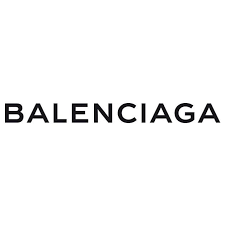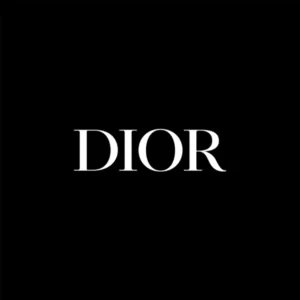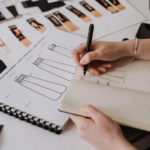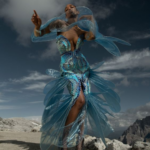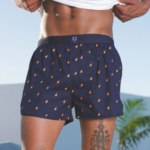As of Friday the 11th of February, the first fashion week of 2022 has started. Seeing as this week revolves around luxury brands showing off their new collections I thought it might be nice to repeat a post that I wrote last year: “High Fashion: The sustainability initiatives of Gucci, Louis Vuitton, and Prada”.
Today, the post will include Bottega Veneta, Balenciaga, and Christian Dior.
 Bottega Veneta
Bottega Veneta
Bottega Veneta was founded in 1966 by designers Michele Taddei and Renzo Zengiaro. It is an Italian luxury brand, currently based in Milan, that has several product lines including handbags, shoes, perfume, and ready-to-wear fashion.
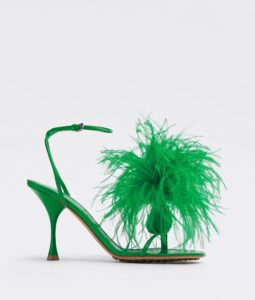
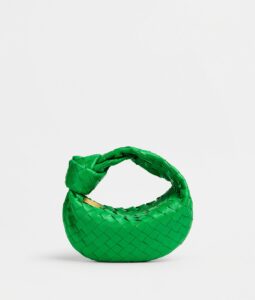
The brand is known for its funky designs and vibrant color.
Like Gucci, Alexander McQueen, and Yves Saint Laurent, Bottega Veneta is part of the luxury group Kering.
Many of the sustainability initiatives of Bottega Veneta are put forward by Kering.
As part of the Kering Group, Bottega Veneta has similar goals and initiatives as the other fashion houses. The brand aims to reduce its total environmental impact by 40% in 2025. Next to this, Bottega Veneta plans to reach 100% sustainable sourcing and traceability for raw materials by 2025.
The Kering Group – including Bottega Veneta – also pledged to go fully carbon neutral, and to reduce greenhouse gas emissions by 50% in 2025
In its products, animal materials such as leather, wool, silk, and feather. These materials are quite controversial in the fashion industry – especially in regards to sustainability. Many argue that these animal materials are unethical and cause harm to the environment.
While using these materials is definitely unethical, it can be argued that leather is a byproduct of the meat industry and does not add any extra environmental damage.
For its leather goods, Bottega Veneta guarantees complete transparency and responsible sourcing.
The brand uses a small to medium amount of sustainable materials including organic cotton, linen, recycled fabrics, and jute.
Jute is similar to cotton and is a natural fiber. It is a very durable material, and due to its rather quick maturity, it can be seen as a renewable material.
Sadly, Bottega still uses some petroleum-based materials in its collection, which are most definitely unsustainable.
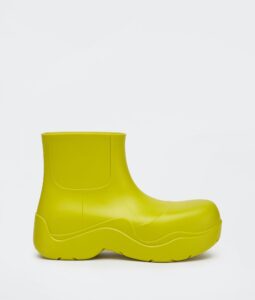
HOWEVER, during the autumn/winter 2021 collection, the brand launched the puddle boot which is completely biodegradable. The shoes look like a hybrid of clogs and crocs (at least that’s what I think). Instead of synthetic materials, the brand used rubber made of natural molecules including sugarcane and coffee.
As part of the Kering Groups, Bottega Veneta also has similar goals for fair treatment across the supply chain. The brand has taken steps to evaluate forced labor risks.
Moreover, some of the supply chains are certified by Social Accountability International, SA8000. This is a certification to enforce socially acceptable practices in the workplace and includes the Universal Declaration of Human Rights.
On the transparency index by Fashion Revolution, Bottega Veneta has received between 41-50% which is a relatively good score for a high fashion brand.
On the website “Good On You” Bottega is rated with “It’s a start”.
The brand is definitely working on becoming more and more sustainable, however, there are still many factors on which the brand can better itself.
Balenciaga
Balenciaga was founded in 1919 by Spanish designer Cristobal Balenciaga Eisaguirre. He created unique designs and was constantly experimenting with different materials, proportions, and colors. Like Bottega Veneta, Balenciaga is also part of the Kering group.
Over the last few years, Balenciaga has become quite popular amongst the younger population. However, this popularity is not linked to haute couture but rather to sneakers.
Due to its part of the Kering Group, Balengiaca has the same aims and initiatives as Bottega Veneta including reducing its total impact by 40% and aiming for 100% sustainable sourcing and traceability. Balenciaga has the aim to be completely carbon neutral, and diminish its greenhouse gas emission by 50%.
Balenciaga has posted its commitment on the website, which they update regularly for transparency.
The goal of the brand is “to innovate without harming humans or the environment, while also respecting the welfare of animals”.
In 2018, Balengiaca started supporting the World Food Programme by the United Nations. This program was created to counteract world hunger and helps third-world countries to avoid disasters. In 2019, the brand created a collection in support of the program, and 20% of the earnings of each product went to the WFP.
According to CEO Cedric Charbit, the brand is working hard on gender equality.
In its products, the brand uses leather and wool. On the website, the brand notes that it is fur and exotic leather-free.

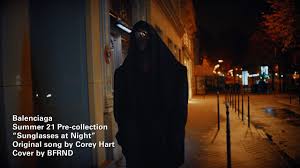
In the 2021 summer collection, 93.5% of the materials used were either certified sustainable or upcycled. In this collection, most clothes were gender-neutral, because the brand sees this as a way to reduce resources and waste.
On the transparency index by Fashion Revolution, Balengiaca has received between 41-50% which is a relatively good score for a high fashion brand.
On the website “Good On You” Balengiaca is rated with “It’s a start”.
The brand is definitely working on becoming more and more sustainable, however, there are still many factors on which the brand can better itself.
Christian Dior
Christian Dior, further referred to as Dior, was founded in 1946 in Paris by Christian Dior.
The fashion house belongs to LVMH (Louis Vuitton Moët Hennessy), which is the largest luxury group in the world. Like Kering, this luxury group has its own sustainability initiatives.
LVMH has created a strategy with three key deadlines for 2023,2026, and 2030 which revolves around four product-focused pillars.
- Protect biodiversity
- Fight climate change
- The circular economy
- Transparency
While LVMH has an extensive report on their initiatives and goals I could not find such a report for Dior, however, I did come across some interesting information on the brand.
The brand has set an initiative to reduce greenhouse gas emissions generated from its operations. However, according to Censible Dior is performing very poorly in this area. The performance is based on its success in implementing efficiency measures such as technology, green building, and sourcing of renewable energy. The brand also performs poorly on pollution prevention, but it is a top performer in regard to water conservation.
Dior uses some eco-friendly materials and has a restricted substance list.
The brand fights against labor abuse in the final stages of production. According to Censible the brand performs well compared to other brands. However, the brand is not transparent or traceable in its supply chain.
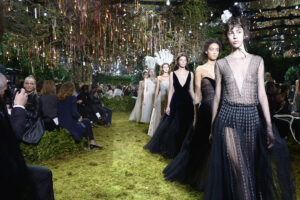
In the legacy of Christion Dior, who loved gardening, the brand has been dedicated to restoring the Grasse region with flowers. It is also planning on restoring La Petite Provence, and the Queen’s Grove at Versaille.
The fashion brand supports women all around the world and has founded the Women@Dior initiative which helps women from third world countries.
On the transparency index by Fashion Revolution, Dior has received between 21-30% which is a very low score for a luxury fashion brand.
On the website “Good On You” Dior is rated “Not good enough”.
While the brand has some sustainability initiatives, it is definitely not enough, and Dior needs to improve by a whole lot in order to reach the goals that LVMH has set.
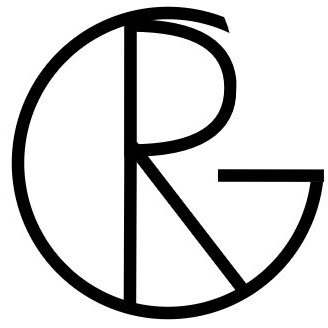

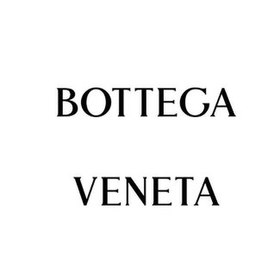 Bottega Veneta
Bottega Veneta